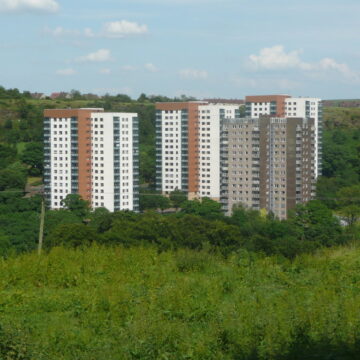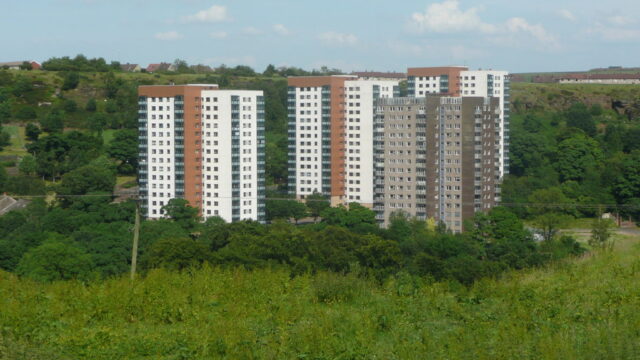
The Large Panel System (LPS) is a construction method that uses prefabricated blocks that are created offsite and then fitted together to make a building. It became popular in the 1960s.
Large Panel System buildings were constructed between 1963 and 1975 using precast concrete walls, floors and roof panels.
In 1968, when Ronan Point collapsed, it became clear that there can be problems with LPS buildings.
The structure of this type of block is weak, so a gas explosion, high wind or serious fire can cause them to fail. There are often gaps between floor and wall panels, which increase the risk of serious fire spread.
Gaps between panels, often where floors or ceilings meet walls, or where the ends of internal wall panels join external walls, mean that fire is unlikely to be contained by a flat for one hour, which building regulations require. This is called compartmentation.
After the publication of the Ronan Point Report on 6 November 1968, Circular 62/68 was published on 15 November 1968.
This guidance said that all completed blocks of flats over six storeys in height should be assessed to see if they could resist 5 psi static pressure. If they could, then they could have piped mains gas. None of the flats assessed reached this.
On 20 December 1968 Circular 71/68 was published. This said if the piped mains gas was removed and bottled gas (LPG) banned then static pressure could be reduced to 2.5 psi.
These two circulars are still mandatory today and have been incorporated into today’s building regulations and codes: in England and Wales, The Building Regulations 2010; and in Scotland the Building (Scotland) Regulations 2004.
On 1 April 1970 the Fifth Amendment to the Building Regulations reduced the height from 6 storeys to any building above 4 storeys.
If your block is one of those which was built before 1975 and is still in use, you will want to know that it is safe.
There is no law specifically about Large Panel Systems, but some of the information on our repairs, gas safety and Fire Risk Assessment pages might be relevant.
And there have been strong recommendations when it comes to this type of building.
If your building is LPS you may wish to take steps to ensure you can live in safety and without worry. Here are some possible actions.
Find a template letter on our Contacting your landlord page.
To help you see what sort of information you might ask for, here is an example of an FOI request asking about large panel systems.
If you believe that the owner of your block is not adhering to the law, you could:
If you get an unsatisfactory answer, or your landlord considers the matter closed when you don’t, consider making a complaint through the Housing Ombudsman.


Guide


Tools you can use


Guide


Tools you can use